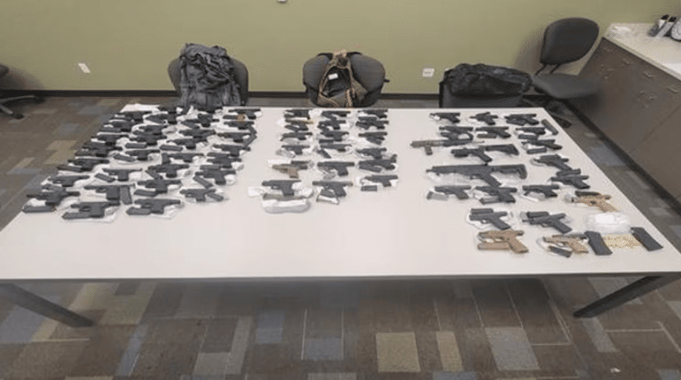LITTLE ROCK, ARKANSAS — The Arkansas Senate voted in favor of amending a House Bill requiring universities and colleges to allow faculty and staff to carry concealed concealed on campus. This prompted an additional expansion of the bill which would include students and visitors to be able to participate.
via the Associated Press
“Nobody is claiming 16 hours is going to make you an expert,” Republican Sen. Jeremy Hutchinson said of the training provision, which had been rejected a day earlier by a Senate panel. “But 16 hours is better than no hours.”
This recent legislation is believed to come as a response to a 2013 law allowing staff and faculty to carry concealed on campus at a university’s discretion. No public university opted into that program.
The training requirement appears aimed at critics who worry about the ramifications of concealed carry on campus. However, with that addition, lawmakers saw fit to include the spectrum of people allowed to participate.
“If they want to put that requirement on there, with 16 hours of intense, out-of-pocket expenses, we have to let every Arkansan who wants to go on a college campus be able to participate in that,” Sen. Trent Garner told reporters.
The governor of Arkansas, Asa Hutchinson, appears hesitant to come out for or against the legislation. This leaves it up in the air whether or not, if brought to his desk, he will sign it.
On the surface, I can see why lawmakers would want to include a training program. It allays some people’s concerns about the addition of guns to campus. However, this is yet another example of the state inserting itself into gun rights. Every single step of the way, legislators keep inserting themselves and the power of the state into an individual’s choice to protect him or herself with a concealed carry handgun. We have yet to find any significant studies correlating training requirements with reduced illegal gun violence.
Each state records crime statistics differently. With states like Ohio and Indiana beginning to make distinctions in reporting lawful gun use versus illegal gun use, it will still take decades to determine correlation.
For every legislative decision made without facts, we are stuck constantly playing “what if”.
What if lawmakers left concealed carriers alone and let them dictate the level of training?
What if we didn’t pass laws based upon vague emotional appeals and instead took a pragmatic view on the individual’s right to keep and bear arms?
Unfortunately, the state appears ill-equipped to encourage a citizen’s independent need for critical thought, analysis, and action. In lieu of that, I’d expect to see more and more states propose and sometimes pass legislation that needlessly restricts citizens’ right to carry concealed.
And while the Fourth Circuit Court of Appeals takes aim at citizen’s rights, we truly need to remember what role the judiciary plays. The legislative, executive, and judiciary branches do not exist to place additional restrictions upon the citizen — they exist to ensure the citizen’s individual liberties are upheld. Where compromise is necessary, that compromise must be transparently placed before the hands of the people and negotiated appropriately.
When individual branches of the government, whether they be federal or state, take upon themselves the unilateral authority to force citizens away from rights which are inalienable, they inevitably weaken their own governance.














![[VIDEO] Does Your Leather Holster Squeak? Here Are Some Tips To Fix It](https://imagedelivery.net/sbm_lYeJbALkepJgtmRD5w/concealednation.org/2014/10/thumbnail-template.jpg/w=728,h=381)